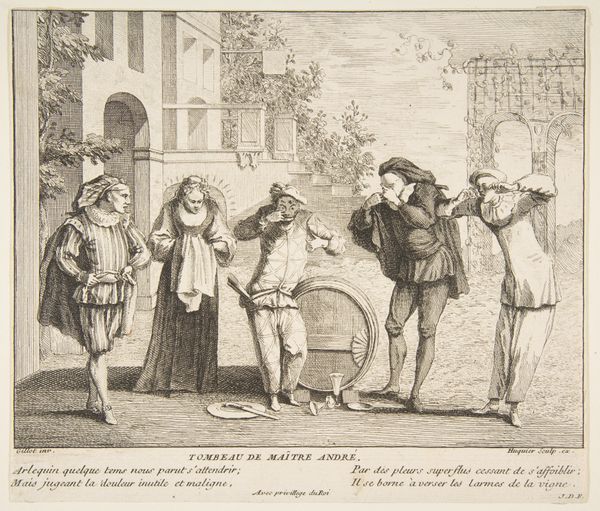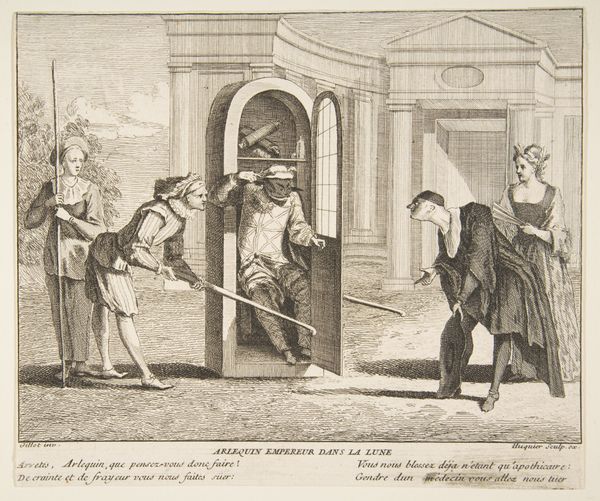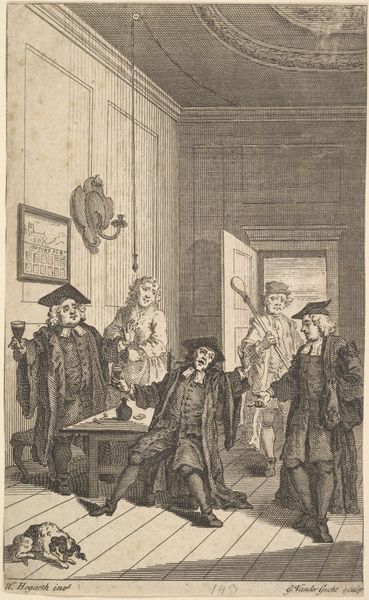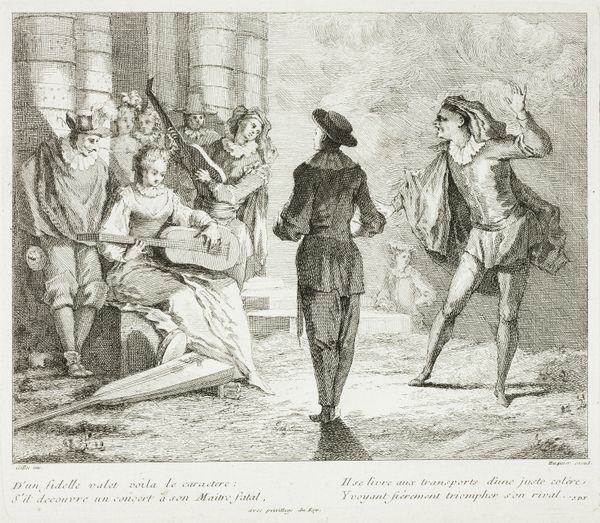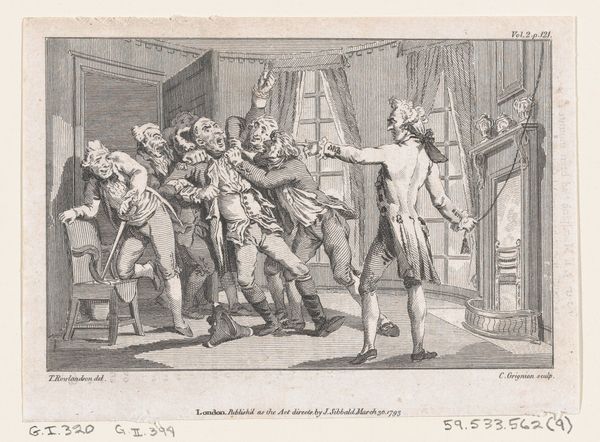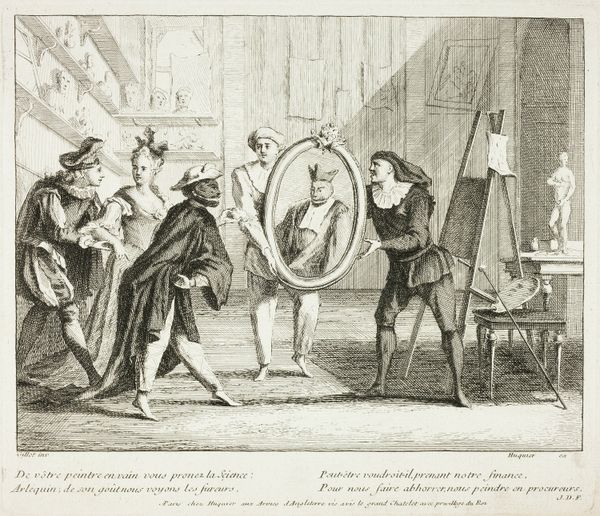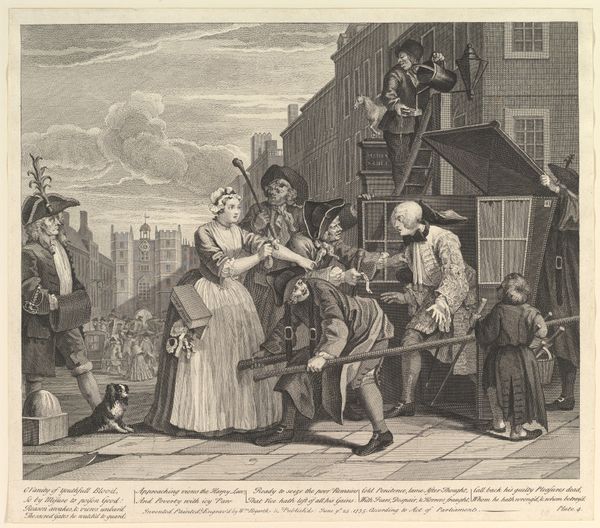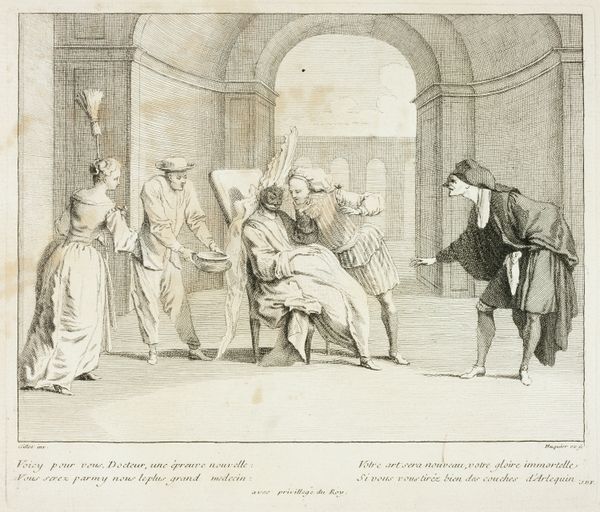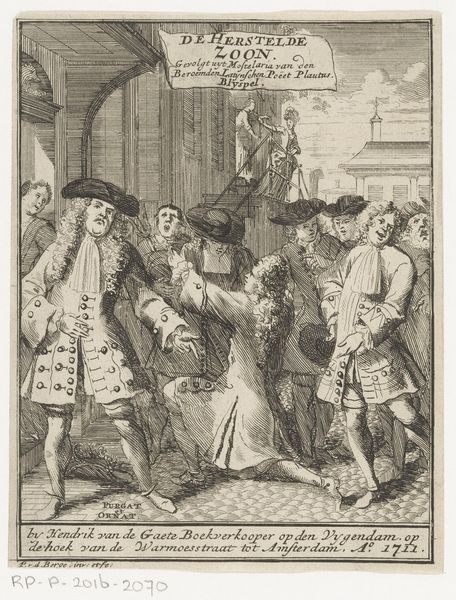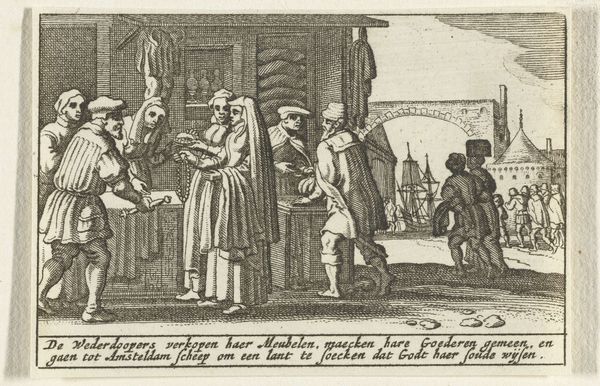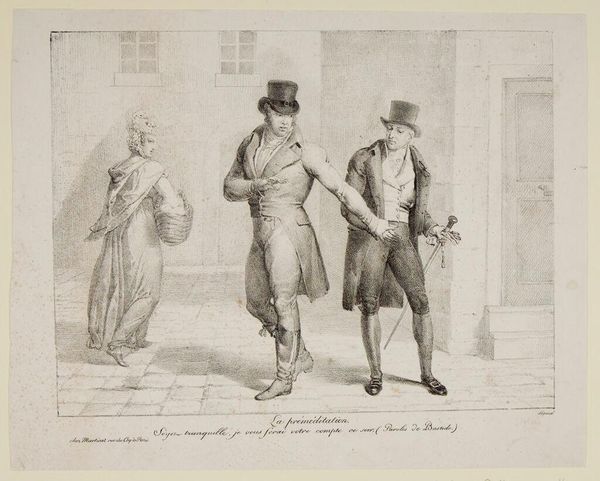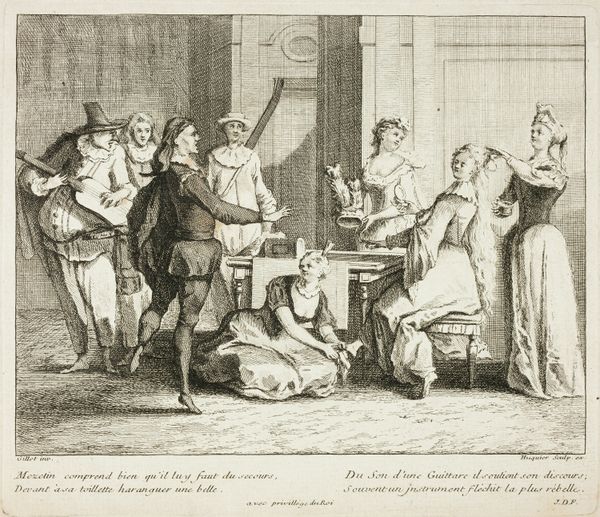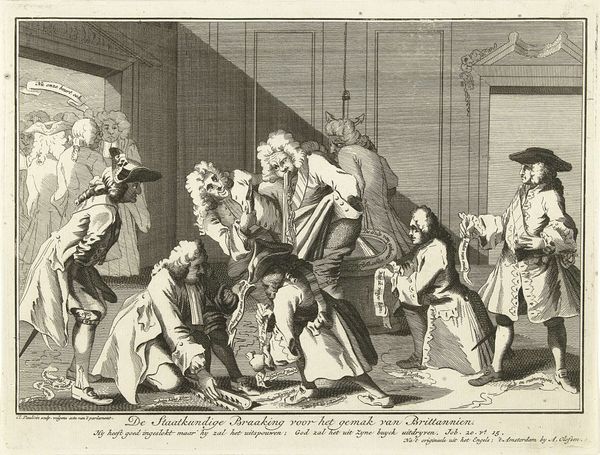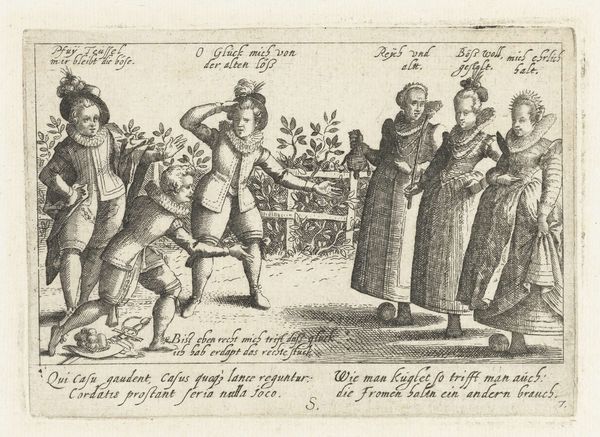
drawing, print, etching, paper
#
drawing
# print
#
etching
#
paper
#
history-painting
Dimensions: 160 × 215 mm (image); 190 × 225 mm (plate); 235 × 315 mm (sheet)
Copyright: Public Domain
Editor: So, this is "Plate from Livre de Scènes Comiques" by Gabriel Huquier, dating back to sometime between 1729 and 1732. It's an etching on paper, currently held at the Art Institute of Chicago. I’m immediately struck by the rather theatrical quality of the scene. What’s your take? Curator: Theatrical is a great word! It’s as if we’ve stumbled upon a stage, mid-performance. The figures seem almost comically mournful, don't they? Their exaggerated expressions and gestures suggest a playful, rather than genuinely sorrowful, scene. It feels satirical. Have you thought about what "scènes comiques" might suggest for understanding the context of the imagery here? Editor: Right, comique! Maybe it’s poking fun at the rituals of mourning, or maybe the upper classes in general? They do look quite overdressed, almost like caricatures. The title is a bit of a giveaway, now that I think about it... Curator: Exactly. It's fascinating how clothing, in this era, signalled so much about a person's social standing, their wealth and perhaps their pretensions! Note too how Huquier used the etching technique to create delicate lines, which gives it a sort of shimmering lightness, even while depicting 'death.' The inscription also adds to the fun...what does it say, roughly? Editor: Something about the death of Maître André being terrible…but also reminiscing about the good wine to be had! That just proves the satire. I was initially drawn to the composition, but realizing it's satire gives it a whole new dimension. Curator: Yes, seeing art is only part of it! Learning what’s _behind_ the art makes the visual even richer, more poignant. In the end, every encounter should challenge our assumptions.
Comments
No comments
Be the first to comment and join the conversation on the ultimate creative platform.
